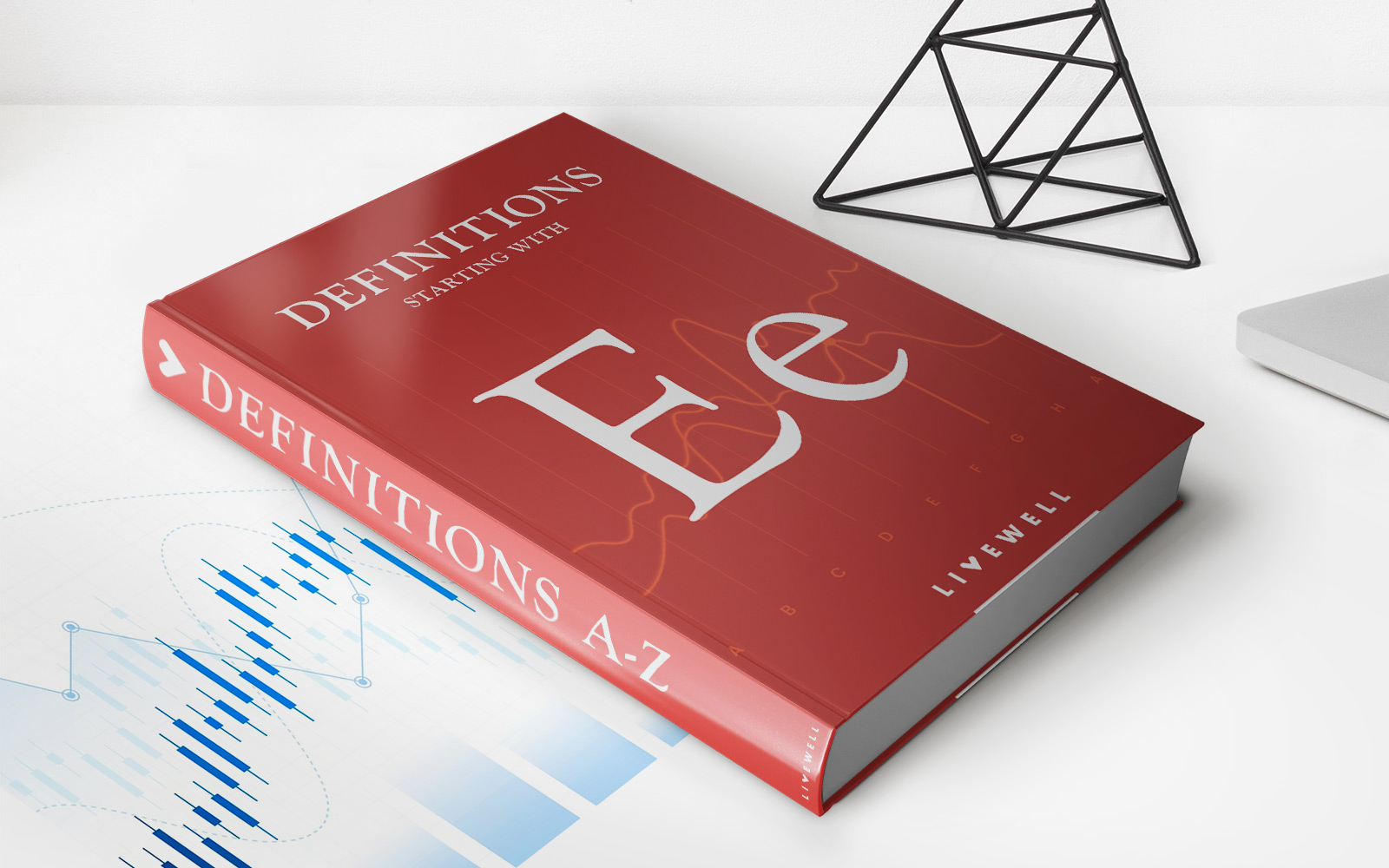

Finance
What Is Earnout In M&A
Published: February 23, 2024
Learn about earnout in M&A and its impact on finance. Understand the benefits and risks of earnout agreements in mergers and acquisitions.
(Many of the links in this article redirect to a specific reviewed product. Your purchase of these products through affiliate links helps to generate commission for LiveWell, at no extra cost. Learn more)
Table of Contents
Introduction
Understanding Earnout in M&A
When companies engage in mergers and acquisitions (M&A), the deal structure often involves various components aimed at aligning the interests of the buyer and the seller. One such component that has gained prominence in M&A transactions is the earnout provision. Earnout, also known as an earn-out or an earn-out agreement, is a contractual arrangement wherein the seller of a business agrees to receive additional payments based on the performance of the business following its acquisition. This structure enables the buyer to mitigate risk and provides the seller an opportunity to realize additional value from the deal.
Earnouts are particularly common in situations where there is uncertainty regarding the future performance of the target company. By incorporating earnout provisions into the deal, buyers can protect themselves from overpaying for a business that may not meet its projected performance, while sellers can potentially capitalize on the future success of the business they built.
Understanding the dynamics of earnout arrangements, including their advantages, disadvantages, and key considerations, is essential for both buyers and sellers in M&A transactions. In this article, we will delve into the intricacies of earnout in M&A, explore its implications, and shed light on the factors that should be taken into account when structuring earnout agreements.
Understanding Earnout in M&A
Earnout arrangements are designed to bridge the valuation gap between the buyer and the seller, especially when there is uncertainty about the future performance of the acquired business. This structure allows the buyer to make initial payments based on the current value of the business, with additional payments contingent upon the achievement of predetermined performance milestones. Typically, these milestones are based on financial targets, such as revenue, profitability, or other key performance indicators (KPIs) over a specified period following the acquisition.
From the seller’s perspective, an earnout provision can serve as a means to realize the full potential value of the business, particularly if they believe that the business has significant growth prospects that are not entirely reflected in the upfront purchase price. This can be advantageous for sellers who are confident in the future performance of the business but may lack the leverage to negotiate a higher upfront price based on projected results.
For buyers, incorporating an earnout structure can be a strategic way to mitigate the risks associated with the unknown future performance of the acquired business. It allows them to align the seller’s interests with the post-acquisition performance of the business, providing an incentive for the seller to assist in the smooth transition and contribute to the achievement of the agreed-upon milestones. Furthermore, earnouts can be particularly valuable in situations where the buyer and the seller have differing views on the business’s future potential, as it enables them to share the risk and reward associated with the uncertainty.
It is important to note that earnout arrangements can vary widely in their complexity and terms, and their successful implementation requires careful planning, clear milestone definitions, and effective post-acquisition management. Additionally, the accounting treatment of earnout payments and the potential impact on the buyer’s financials should be thoroughly evaluated to ensure transparency and alignment between the parties involved.
Advantages and Disadvantages of Earnout
Earnout arrangements offer several advantages for both buyers and sellers in M&A transactions. For sellers, earnouts provide an opportunity to realize additional value from the sale of their business, especially if they are confident in its growth potential but are unable to negotiate a higher upfront price. This can be particularly beneficial for entrepreneurs who have built successful businesses and are seeking to capitalize on future performance while also ensuring a smooth transition under the new ownership.
Moreover, earnouts can align the interests of the buyer and the seller, fostering collaboration and shared objectives in driving the business’s post-acquisition performance. This alignment can be instrumental in retaining key employees, maintaining customer relationships, and leveraging the seller’s expertise to achieve the agreed-upon milestones, ultimately benefiting the long-term success of the business.
However, earnout arrangements also present certain disadvantages and challenges. One of the primary concerns for sellers is the risk of not achieving the earnout targets, which could result in a lower overall purchase price than initially anticipated. This risk is amplified in cases where the buyer’s management and operational decisions significantly influence the business’s performance, potentially impacting the seller’s ability to attain the earnout payments.
From the buyer’s perspective, the main drawback of earnouts lies in the potential complexities associated with managing the earnout process, including defining measurable and realistic performance metrics, ensuring transparency in financial reporting, and addressing potential conflicts of interest between the buyer and the seller. Furthermore, the uncertainty surrounding the future business performance and the additional financial obligations tied to earnout payments can create challenges in accurately valuing the acquisition and integrating the acquired business into the buyer’s operations.
Despite these challenges, when structured thoughtfully and with clear communication between the parties, earnout arrangements can be a valuable tool in M&A transactions, enabling buyers and sellers to navigate valuation discrepancies and share the risks and rewards associated with the business’s future performance.
Key Considerations in Earnout Agreements
When structuring earnout agreements in M&A transactions, several key considerations should be carefully evaluated to ensure the effectiveness and fairness of the arrangement for both the buyer and the seller. Clear and comprehensive documentation is essential to mitigate potential disputes and uncertainties that may arise during the earnout period.
1. Milestone Definition: Defining the performance milestones that trigger earnout payments is critical. These milestones should be specific, measurable, achievable, and relevant to the business’s success. Ambiguity in milestone definitions can lead to disagreements and disputes, underscoring the importance of clear and unambiguous language in the agreement.
2. Post-Acquisition Management: Establishing a framework for post-acquisition management and decision-making is vital. Both parties should outline their respective roles and responsibilities in driving the business’s performance during the earnout period, ensuring that the seller’s expertise and knowledge are effectively leveraged while aligning with the buyer’s strategic objectives.
3. Financial Reporting and Transparency: Implementing transparent financial reporting practices is crucial to maintain trust and accountability between the buyer and the seller. Clear guidelines on financial disclosures, audit procedures, and the mechanisms for calculating earnout payments are imperative to avoid misunderstandings and disputes related to financial performance.
4. Dispute Resolution Mechanisms: Including provisions for resolving potential disputes that may arise during the earnout period is essential. Establishing a clear process for dispute resolution, such as mediation or arbitration, can help mitigate conflicts and facilitate timely resolutions, thereby safeguarding the overall success of the earnout arrangement.
5. Integration and Communication: Promoting effective communication and integration between the buyer and the seller’s teams is key to navigating the complexities of the earnout period. Open dialogue, regular updates on business performance, and collaborative decision-making can foster a cohesive working relationship, enhancing the likelihood of achieving the earnout milestones.
By addressing these considerations and incorporating them into the earnout agreement, both parties can enhance the clarity, fairness, and effectiveness of the earnout structure, ultimately contributing to a more successful post-acquisition transition and the realization of the business’s full potential.
Examples of Earnout Structures
Earnout structures in M&A transactions can take various forms, tailored to the specific circumstances of the deal and the objectives of the parties involved. While the specifics of earnout arrangements are highly customizable, several common structures are frequently utilized to align the interests of buyers and sellers and facilitate the smooth transition of the acquired business.
1. Revenue-Based Earnout: In this structure, earnout payments are contingent upon the target company achieving specified revenue targets over a defined period post-acquisition. This approach is particularly suitable for businesses with predictable revenue streams and provides a straightforward metric for assessing performance.
2. Profitability-Based Earnout: Profitability-based earnouts tie additional payments to the target company’s ability to meet predetermined profitability thresholds, such as EBITDA (Earnings Before Interest, Taxes, Depreciation, and Amortization) or net income. This structure aligns the seller’s incentives with the financial success of the business under the new ownership.
3. Hybrid Earnout: A hybrid earnout structure combines multiple performance metrics, such as revenue, profitability, and strategic milestones, to create a balanced and comprehensive framework for earnout payments. This approach allows for a more holistic evaluation of the business’s overall performance post-acquisition.
4. Retention-Based Earnout: In some cases, earnout payments may be tied to the retention of key employees or the maintenance of customer relationships following the acquisition. This structure incentivizes the seller to actively contribute to talent retention and customer satisfaction, which are critical for the business’s long-term success.
5. Time-Based Earnout: Time-based earnouts stipulate additional payments based on the duration of the seller’s continued involvement or the business’s sustained performance over a specified period. This structure can be beneficial for ensuring a smooth transition and ongoing support from the seller during the post-acquisition phase.
These examples illustrate the versatility of earnout structures in accommodating diverse business scenarios and objectives. By tailoring the earnout arrangement to the specific circumstances of the transaction and aligning it with the business’s performance drivers, buyers and sellers can create a mutually beneficial framework that incentivizes collaboration and fosters the achievement of shared goals.
Conclusion
As a dynamic component of M&A transactions, earnout arrangements play a pivotal role in bridging valuation gaps, aligning the interests of buyers and sellers, and facilitating the successful integration of acquired businesses. By offering sellers an opportunity to realize additional value based on the post-acquisition performance of their businesses, earnouts provide a mechanism for sharing risk and rewards, fostering collaboration, and promoting the long-term success of the combined entity.
While earnout structures present distinct advantages, such as enabling sellers to capitalize on future business performance and aligning incentives between the parties, they also entail challenges related to milestone definition, financial transparency, and post-acquisition management. Clear communication, meticulous planning, and a thorough understanding of the implications of earnout agreements are essential for navigating these complexities and maximizing the potential benefits for both buyers and sellers.
Key considerations, including milestone definition, post-acquisition management, financial transparency, dispute resolution mechanisms, and integration strategies, are critical in shaping effective earnout agreements that promote fairness, transparency, and collaboration. By addressing these considerations thoughtfully and proactively, parties can enhance the likelihood of a successful earnout period and the realization of the business’s full potential.
Furthermore, the versatility of earnout structures, exemplified by revenue-based, profitability-based, hybrid, retention-based, and time-based earnouts, underscores the adaptability of this mechanism in accommodating diverse business contexts and objectives. Tailoring earnout arrangements to the specific circumstances of the transaction and the unique drivers of the business’s performance allows buyers and sellers to create a customized framework that incentivizes mutual success and facilitates a seamless transition.
In conclusion, while earnout arrangements require careful planning and consideration, when structured thoughtfully and executed with transparency and collaboration, they can serve as a valuable tool in unlocking the full potential of M&A transactions, driving the sustained growth of the acquired business, and fostering a mutually beneficial relationship between the parties involved.














